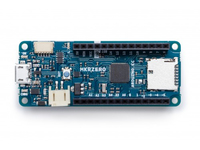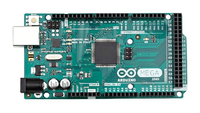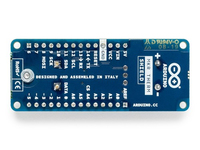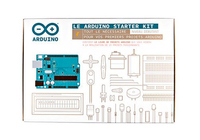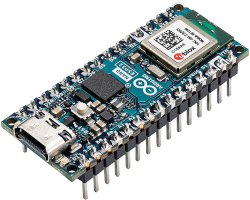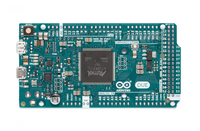Your settings
- Details
Products description
The Arduino Leonardo is a microcontroller board based on the ATmega32u4. It has 20 digital input/output pins (of which 7 can be used as PWM outputs and 12 as analog inputs), a 16 MHz crystal oscillator, a micro USB connection, a power jack, an ICSP header, and a reset button. It contains everything needed to support the microcontroller; simply connect it to a computer with a USB cable or power it with a AC-to-DC adapter or battery to get started.The Leonardo differs from all preceding boards in that the ATmega32u4 has built-in USB communication, eliminating the need for a secondary processor. This allows the Leonardo to appear to a connected computer as a mouse and keyboard, in addition to a virtual (CDC) serial / COM port.
| Processor | |
| Microcontroller model: | ATMega32u4 |
| Microcontroller frequency: | 16 MHz |
| Memory | |
| Flash memory: | 0.032 MB |
| SRAM (Static Random Access Memory): | 2.5 KB |
| EEPROM (Electrically Erasable Programmable Read-Only Memory): | 1 KB |
| Ports & interfaces | |
| Wi-Fi: |  |
| Ethernet LAN: |  |
| USB ports quantity: | 1 |
| Number of digital I/O pins: | 20 |
| Number of analog I/O pins: | 12 |
| PWM digital I/O pins: | 7 |
| Features | |
| Form factor: | Arduino |
| Power | |
| DC input voltage: | 7-12 V |
| Operating voltage: | 5 V |
| Input voltage (max): | 6 - 20 V |
| DC current per I/O pin: | 40 mA |
| Weight & dimensions | |
| Board dimensions: | 53.3 x 68.6 mm |
| Weight: | 20 g |
Product Safety Information
Responsible Person in the EU:
Arduino S.r.l. Via Agostino da Montefeltro 2 10134 Turin Italien DSA@arduino.cc https://www.arduino.cc
Last viewed:

